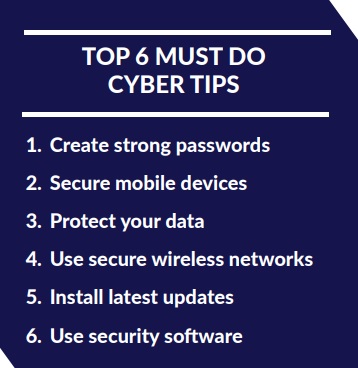In its March edition of ‘Phish and Ships’ newsletter, Be Cyber Aware at Sea cited the most influential and destructive examples of ransomware currently emerging. Despite significant progress, ransomware is still difficult to stop even for Windows computers running antivirus. The only reliable defence is a backup, but even that can come under attack if it can be reached from the infected PC.
Cyber security experts warn that more hits are on their way, and that even more clever and dangerous strains will emerge.
- GandCrab: A new strain of ransomware discovered early in January 2018. The malware demands a cryptocurrency fee for the return of any files. More worrying, GandCrab is being marketed as a ransomware-as-a-service package to budding cyber criminals, who could split the profits with the developers 60:40.
- GoldenEye: The ransomware attacks reported in Ukraine, which hit the national bank, state power company and Kiev’s largest airport on June 27, 2017, were caused by GoldenEye ransomware, which is thought to be a mixture of Petya and another ransomware, called Mischa. GoldenEye will prevent computer systems from being booted up and from victims retrieving any stored data. When the user reboots, instead of Windows they could see a skull and crossbones splash screen with a ransom demand.
- CryptoLocker: Long gone but it deserves infamy because its heyday of 2013 proved to cyber criminals how successful ransomware could be.
- Locky: Locky is as bad as ransomware can get. Locky’s creators seem to have thought of everything, not only encrypting a wide range of data files but even Bitcoin wallets and Windows Volume Snapshot Service (VSS) files in case users try and restore files using that. It reaches out to attached shares and even other PCs and servers. It uses strong encryption and has found several high-profile victims.
- WannaCry: EuroPol has described the WannaCry ransomware, which shut down hospital infrastructure all over the UK and uses a leaked exploit first developed by the National Security Agency, as unprecedented in scale.
- zCrypt: zCrypt tries the unusual technique of spreading as a virus. This means that it doesn’t rely on malicious emails to find victims and can spread on USB sticks.
In response, Be Cyber Aware at Sea provides top 6 must do tips with respect to cyber security:

Further information may be found herebelow:
































































This is really good examples of ransomware problem, if you faced this problem then you must know how to solve it. Ransomware is really dengarous virus attack. Overall well-penned article. I really impressed.